take your shooting to the next level without leaving the comfort of your own home
HOW TO MAKE THE MOST OF YOUR LIVING ROOM AND IMPROVE YOUR LONG-RANGE SHOOTING ABILITY (WITHOUT GOING TO THE RANGE)
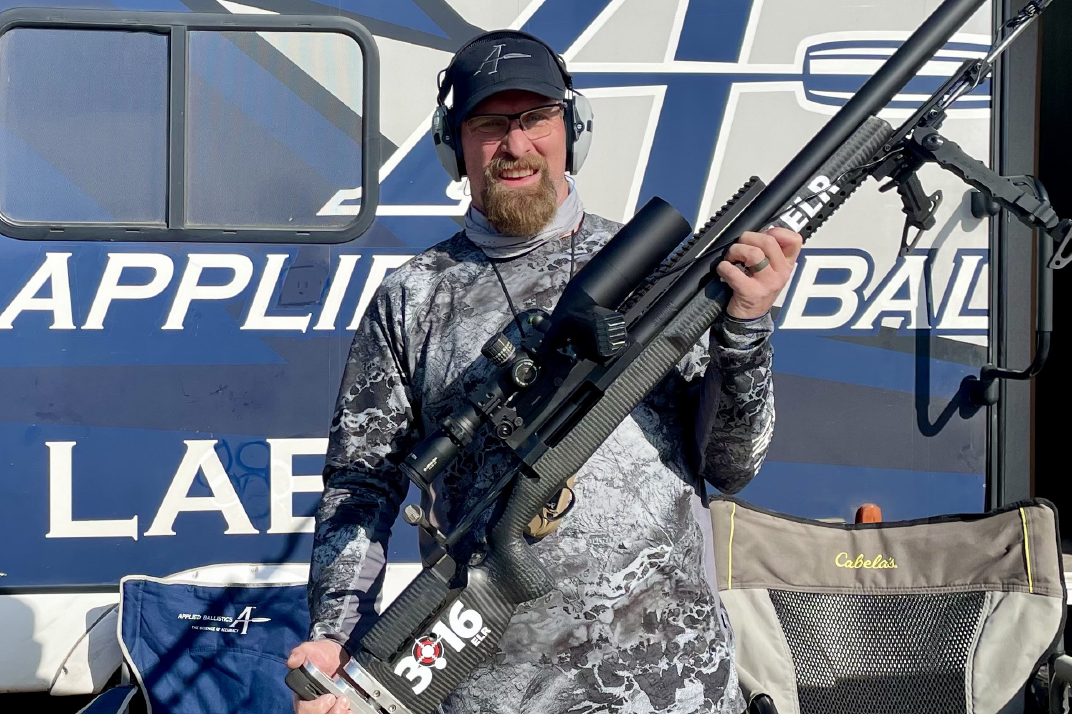
Pictured Above – 416 Stroker, Athlon Cronus BTR, Era-Tac 70 moa adjustable scope rings, Mirage 18’, 50moa scope base (to support 2ea Wedge Prisms), Manners LRT carbon fiber stock, ABR rear bag rider, BAT action, Trigger Tech trigger, K&P Barrel, Accu-Tac H-50 bipod, Tubb Magneto Speed setup. This heavy gun set up is built to shoot 4,450 yards w/o holdover. Weighs – 38lbs
Why practice in your living room? It’s one of the easiest, fastest, and least expensive ways to take your shooting to the next level. Whether you are a long-range hunter or a competitor in F-Class, PRS, ELR, or most other disciplines, you don’t have to go the range to get better.
How can you use your living room to get better at Long Range Shooting? Focus on the Big Five:
1. Dry Fire Development
2. Wind Call Development
3. Load Development
4. Ballistic Tool Development and
5. Equipment Development
What is dry-fire development? Setting up your gun and shooting equipment to mimic a shooting situation.
Why is dry-fire development so critical? Because most mistakes made in long-range shooting are mental. Developing mental and muscle memory will help you execute your plan of action with more accuracy and efficiency. Not being able to make the shot before a big bull elk steps over a ridge, or running out of time in a match, all of these issues can be addressed in your living room.
How do you begin? Follow these two steps:
Case in Point:
Last year I was at the Spearpoint National ELR Finale shooting in the Heavy division and was doing very well until T5, which was 2,073 yards. Team 3:16 ELR was in one of the top positions to be at the prize table at the awards ceremony. I was very proud of the new adjustable bag rider I had installed on my stock, but I hadn’t spent much time behind it yet. I set up for the series of targets in that string of fire starting with the longest target first to make sure that my bipod would work for all the targets without having to get up and readjust my bipod and take away valuable time. Little did I know, my new rear-adjustable bag rider was set as short as it would go and when I started on T5 it was too short to lift the back of the rifle up enough to make the shot. In the panic of the moment, I was running out of time and tried to muscle the back of the rifle instead of it free floating and did not get a single impact on T5. As I moved to T6 at 2,207 yards, I managed to get a 2nd round impact and ran out of time. I discovered afterward that I was turning my new rear adjustable bag rider THE WRONG WAY! My point is this, I never added adjusting my rear bag rider to my dry fire sequence and my muscle memory was not there.
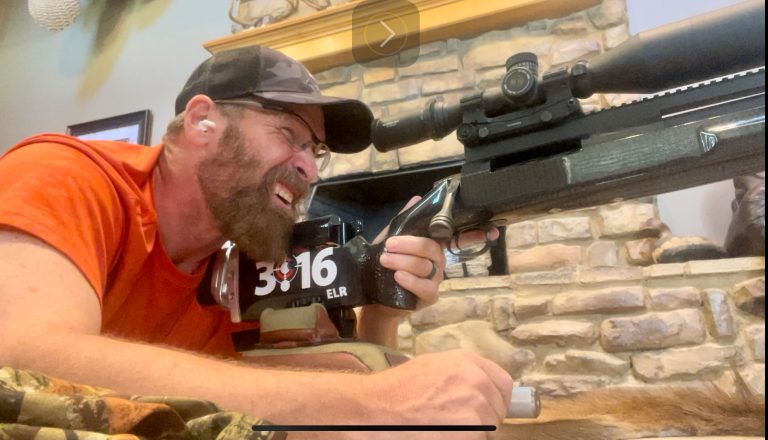
4AW Adjustable rear holder (in Austria), Custom Edgewood rear bag, Custom 6.5 Creedmoore shooting mat.
What is wind call development? Studying the wind every place you go during the day is a great place to start. Assess the wind when you are driving. Look out the window at a restaurant. Take a moment to notice and evaluate the speed of the wind on your face and in your ears. Look at the trees and grass and evaluate how the wind reacts like waves around hills and valleys. Carry your wind meter with you and test yourself.
Why do this? Because, if you can’t read the wind, YOU CAN’T SHOOT! A surprising percentage of success in long-range shooting depends on a person’s ability to read and adapt to the wind in their environment.
How do you use your living room to get better at reading and calling wind? Listen to every podcast and read every book you can about wind. I believe I am going to go to the next level in ELR shooting because I am learning from some of the best wind callers in the business via video, books, seminars, podcasts, and personal training.
Case in Point:
Calling wind is nerve racking for me. Last year, one of the ELR pros that had been teaching me to call wind for the last 2 years said that he was not going to help me the morning of the Spearpoint ELR Finale. He smiled and said, “You’ve beaten me several times this year, and this weekend we are competing against each other!” I felt like I was going to have a heart attack! The wind was shifting from 11-1:30 and gusting up to 25mph (the absolute hardest wind direction there is). I didn’t think I had a chance.
We went to work and my confidence began to grow when we had several 1st-round impacts with me calling the wind for our team. When it was my time to shoot the first shot of the day I was able to nail the wind on a 14” cold bore target at 1,570 yards and go 4/5 on the next to targets out to 1,669 yards. I heard some clapping and a voice in the middle of my shooting string saying “Can I have your wind?” I recognized the voice. It was my wind mentor saying in his own words “That’ll do, that’ll do.” Wind is the most challenging part of the game. Work in your living room to be the best you can and you will become a winner!
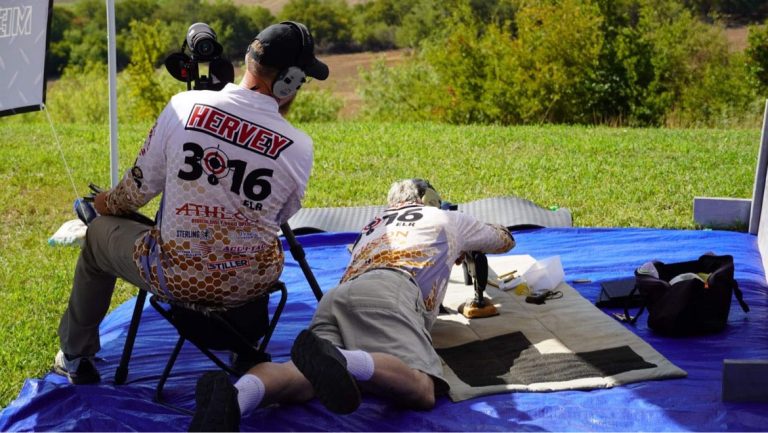
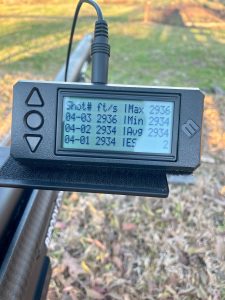
Load development is everything in ELR. I always say, “Small changes over time create big results.”
Why is load development so important? Once you get the wind figured out, it is the vertical dispersion component that gets you impacts past 2,000 yards. The farther you go, the more critical this becomes. The game is changing, and the people winning matches are putting it all together. Their Extreme Spreads (ES) and Standard Deviations (SD) are extremely low.
How do you use your living room to improve your load development? During the off-season, research ways to improve everything that you are doing in your reloading process. Test all of your equipment and research everything you can. My powder scale is within 1/2 kernel of accuracy (.04 grain). Test and see if you can get a lower ES by sorting your brass and bullets by weight. Look at equipment to test neck tensions, expander mandrels, and annealing your brass to see if it makes a difference. Don’t be satisfied until your ES is below 10 fps. Personally, I am not satisfied until mine are below 5 ES. If you think it really doesn’t make that big of a difference, just change your velocity by 10 fps and look at the difference in your drop.
Case in Point:
This really came to light with me last year when I was smashing an ELR match on T1-T3 out to 1,860 yards. We were 11/15 in a 25 mph 11-1:30 switching wind! When I got to T4 at 2,000 yards, I was 0/5 and every shot was just off the edge of the target. That trend continued throughout the match. I ran a magneto speed on my heavy gun and realized that my ES had opened up to 25 fps! I had used a previous load that worked in other matches but failed to realize that I was at the end of a lot of powder that had smaller kernels which probably changed the burn rate. I also remembered that I had a .0025 variance in seating depth and was on the lands (rifling of the barrel). As a result, the bullet was moving on and off of the lands and changing pressure and velocity. I was in position to be in the top 5 and moved down to 27th! Sometimes the greatest teacher is failure.
The living room is the ideal place to get better with your Kestrel, ballistic app, or wind meter.
Why is it so important to become proficient with your ballistic equipment? Because, if you don’t, you are totally dependent on others to give you windage and elevation at a match or in a hunting scenario. What happens when they are unable to attend a match or the shooting order prohibits them from helping you? Nothing good. You need to use your living room time to get good at using your ballistic equipment!
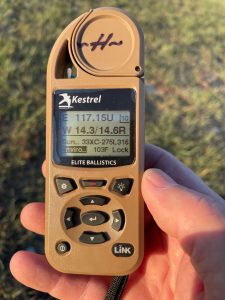
The living room is the ideal place to get better with your Kestrel, ballistic app, or wind meter.
Why is it so important to become proficient with your ballistic equipment? Because, if you don’t, you are totally dependent on others to give you windage and elevation at a match or in a hunting scenario. What happens when they are unable to attend a match or the shooting order prohibits them from helping you? Nothing good. You need to use your living room time to get good at using your ballistic equipment!
How do you do this in the living room? Study and take advantage of every YouTube video you can about your equipment. Practice setting your Kestrel, ballistic app, or wind meter up for matches, target yardage, wind scenarios, ridge angles, wind o’clock vs degree, elevation, calibrating your compass, adjusting latitude, updating environmentals, blue tooth settings, and lock features. The list goes on and on and on. Practice different hunting or match scenarios on your recliner. You’ll be surprised at what a difference it makes. Practice “what if” situations to correct elevation and/or wind mistakes in your equipment. It is just like the dry fire sequence – muscle and mental memory are key to your success!
The living room is the ideal place to get better with your Kestrel, ballistic app, or wind meter.
Why is it so important to become proficient with your ballistic equipment? Because, if you don’t, you are totally dependent on others to give you windage and elevation at a match or in a hunting scenario. What happens when they are unable to attend a match or the shooting order prohibits them from helping you? Nothing good. You need to use your living room time to get good at using your ballistic equipment!
How do you do this in the living room? Study and take advantage of every YouTube video you can about your equipment. Practice setting your Kestrel, ballistic app, or wind meter up for matches, target yardage, wind scenarios, ridge angles, wind o’clock vs degree, elevation, calibrating your compass, adjusting latitude, updating environmentals, blue tooth settings, and lock features. The list goes on and on and on. Practice different hunting or match scenarios on your recliner. You’ll be surprised at what a difference it makes. Practice “what if” situations to correct elevation and/or wind mistakes in your equipment. It is just like the dry fire sequence – muscle and mental memory are key to your success!
Case in Point:
Last March I was in a match in KS that had 50mph wind gusts ranging from 12-1:30 wind angles. My spotter and wind coach asked me what I have in my Kestrel for wind and I showed him 4 moa right. He said to switch to 14 and I thought he was crazy. He said, “Todd, trust me.” He is one of the best wind callers in the world so I did. Right off the bat, he had me just off the edge of the tarter at 3,280 yards in one of the toughest matches in ELR history! The next target was 3,370 yards and I was able to get a 1st round impact! After we left the line, I asked him, “How did you do that?” He asked to see my Kestrel and changed the wind angle from 12:30 to 1:00. The windage switched from 4 MOA to 19 MOA! He said I split the difference. Because he knew his ballistic equipment better than I did, I was one of 6 impacts out of 1,500 shots at the longer distances! Practice using your ballistic equipment in your living room.
Use your living room to test your equipment. Don’t take anyone else’s word for it, test everything yourself. Just because something works for someone else does not mean it is going to work for you!
Why is this so critical? If you are not checking stability in your shooting platform with your rear bag, adjustable rear bag rider, bipod extender, scope base, and mats (both front and back), you are leaving valuable points on the table. Rifle setup is key for your body as well – length of pull, cheek weld, kick pad angle, etc. Making sure that everything is adjusted correctly is essential. Sometimes I spend a few hours just readjusting my stock and getting up and down off my rifle. Occasionally, I will also get my wife to take pictures from above, back, and side angles to see if I am aligning myself perfectly behind the rifle. I try to take every opportunity I can to check my form and establish consistency.
In summary, test and retest your equipment.
Case in point:
I have a friend who got used to shooting a Light gun in ELR at an angle. He was very successful but when he moved up to the heavy division, he was getting pushed around by his larger rifle. I suggested that he take his cheek weld and shoulder pad down to the lowest setting and get his wife to help him line up straight behind the rifle and pull the rife back to his shoulder to a comfortable position and drop his head straight down to get a comfortable eye relief and parallax position behind his scope. I then asked him to move the cheek rest and butt pad to his body while maintaining a light grip, light cheek, and light shoulder. He did so and was in the top 25% the next weekend at King Of 2 Mile! Use your living room to test and re-evaluate every piece of your equipment. Never be satisfied, always look for better equipment, and better ways to use your equipment.
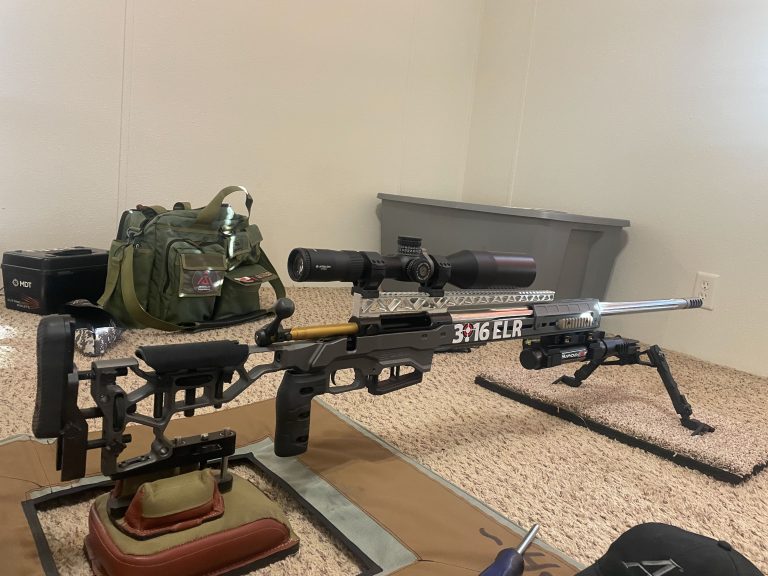
Don’t stick your lip out when hunting season, F-Class season, or ELR season is over. Go to work and use your living room to be the best you can. And, as always, understand that there is something so much more important than all of this. It is what you do with the time, abilities, and earthly treasures God has given you to make a difference on this earth for Him that is most important.
Equipment in the pictures above:
33XC, Athlon Cronus BTR Gen 2, on MDT ACC chassis, ABR rear bag rider, Savage 110 blueprint action, Bartline barrel, Rifle Basic Trigger, Mirage, 18” 9.5oz scope base, Burris Signature adjustable moa tilt rings, Bipod extender, Accu-Tac WB-4 bipod. This light Gun setup is built to shoot 3,250 yards. Weight – 25.9lbs

Todd Hervey is an ELR Pro with 3:16 ELR and a member of the Athlon Pro Team. Todd is an avid Extreme Long Range enthusiast who shoots in Heavy, Light, and ELR 22 divisions. His longest first-round impact in competition so far is 3,370 yards (almost 2 miles). He loves helping new people come into the sport of ELR. In addition to ELR, Todd loves deer, buck, and turkey hunting. He is also a pastor and retriever trainer.

I love this article I have been interested in shooting ELR competitions struggle to find time and the money to develop skills and maybe my kids will put the video games down for a minute and join in with real time experiences with Dad. Thank you 316.